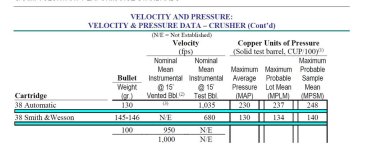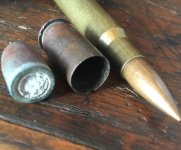. . . BLACK POWDER OK......SMOKELESS BAD.
Prove it! I have owned tons of 38 Top-breaks over the last 40 years, shot them all with manufactured SMOKELESS ammunition and the worst things that have happened were various broken springs. Not one failure, not one "frame stretch", not one malfunction.
I have done years of research on ballistics of early handgun calibers BP and smokeless ammunition and found that with almost no exceptions original BP loads were hotter than modern factory smokeless. To do the research, I have had to go through lots of collector boxes full of BP revolver ammo. Let's face it, revolver barrels are all short, and at the most, you only have about 6" to achieve enough internal pressure to propel the bullet at measured speed. The location of peak pressures is not all that important with 32 S&W, 38 S&W, 44 American, 44 Russian, 44-40, and any other less popular S&W calibers. It is guaranteed that peak pressures of either loading will take place in less than 2" ahead of the forcing cone in the thickened section of the barrel.
In mine and other's testing original BP loads, without exception, leave the barrel with higher velocities than modern smokeless, and in my simple mind, that requires higher pressures to make that possible. Peak pressures can and do appear at the same location in the barrel and are mostly lower than BP. Let's see your research.
Can you blow up a gun - absolutely and a ton of them were broken when smokeless powder was first introduced. Reloading habits were hard to break and the number of hand loaders out there probably filled their cases, just as they did with BP. Probably only did it once!

As for the original question, any 38 S&W from 38 SA on can be shot with current factory loadings, without issues. Being able to determine the condition of the gun you buy is the key in successful purchases of top-break revolvers. It is not that difficult to tell an abused/modified/butchered gun, but it is also important to know where and how to look for cracks, loose mechanism and few gunsmiths will be able to do that. Things like cracked forcing cones, budged barrels, loose lock-up all add up to a no-sale in my book.
The only word of caution when buying smokeless in a few of these old calibers, is that some specialty manufacturers like to hot-rod their ammunition for whatever reason. Look for Remington, Winchester, Federal, and some European ammunition manufacturers like PPU & Fiocchi for 38 S&W.




